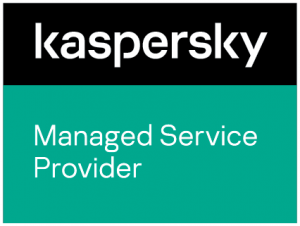Threat Intelligence Starter Resources
Creating a threat intelligence capability can be a challenging undertaking, and not all companies are ready for it. Businesses that run successful threat intelligence teams generally:
- Collect externally available data on threats and correlate it with internal events.
- Be aware of threats driving proactive security controls.
- Establish proactive internal hunting for unidentified threats.
- Invest in employee and customer threat education.
- Expand security industry peer relationships.
- Apply methods for collecting and analyzing external threat data.
For more information, read our white paper on building an advanced threat intelligence team.
Now, if your company is just starting out with threat intelligence and doesn’t have the time or resources to dedicate an entire department to the task, there are some easy ways to begin integrating threat intelligence into your daily routine without breaking the bank.
The following resources can help build awareness of the threat landscape and prepare your company for defense.
Google Alerts
One of the simplest ways to stay informed of potential threats is setting up Google Alerts. These can be especially useful to monitor attacks or vulnerabilities in your industry. To get the most from Google Alerts, be sure to follow Google search best practices like keeping phrases as short as possible, using quotes, leveraging domain extensions, and avoiding synonyms.
Threat Feeds
If you want to become more proactive in collecting data there are a number of open source threat feeds you can use to stay informed of suspicious IP addresses and domains as a starting point for threat research. For example, abuse.ch provides many feeds, including a ZeuS blocklist and ransomware tracker, and dan.me contains a full Tor nodelist that updates every 30 minutes.
Threat Blogs
Being well read is an important habit in life, and doubly so if you’re tasked with defending your company from cyber threats. Here’s a list of some informative blogs that range from general threat intelligence to incident response to geopolitical attacks:
- CyberWire: Relevant briefings on critical cyber news happening across the globe.
- OODAloop: Articles and analysis on cyber and geopolitical threats.
- CTOvision: Context for the CTO, CIO, CISO, and data scientist.
- FireEye: Insights on today’s advanced threats.
- CERIAS: Articles from strategic thinkers like Gene Spafford and Sam Liles.
- Dell SecureWorks: Articles focused on incident response and information security.
- Palo Alto Networks: Articles and research around cyber crime and vulnerabilities.
- DomainTools: Content focused on domain data and internet trends.
- ProtectedBusiness: Tips and techniques for defending your business.
- Recorded Future: Original threat research and best practices for using threat intelligence.
Threat Reports
While blog posts can keep you informed on daily threat intelligence, sometimes it is necessary to look at an entire quarter or year to get a full view of the threat landscape. The following cyber threat reports can help you get a grasp on lessons learned and best practices going forward:
- Checkpoint Security Report: Yearly insights into cyber threats, including malware and botnets.
- NTT Global Threat Intelligence Report: Analysis of global attack data.
- Versign iDefense Cyber Threats and Trends: Overview of key cyber security trends.
- Cisco Midyear Security Report: Threat intelligence and trend analysis report.
- Symantec Intelligence Report: Annual and monthly intelligence reports.
- Verizon Data Breach Investigations Report: Incident data from 67 global contributors.
- Ponemon Institute Cost of Breach Study: Annual report on economics of breach and recovery.
- CyberEdge Cyber Threat Report: Summary of security threats, response plans, and processes.
Threat Tools
While staying aware of the threat landscape is critical to any company’s threat intelligence strategy, there are some tools that can supplement the data without breaking the bank:
- Maltego: Data-mining tool renders directed graphs for link analysis and finds relationships between pieces of information from various sources online.
- Shodan: Search engine allows you to find out which of your devices are directly connected to the internet, where they are located, and if they are being used maliciously.
- TweetDeck: Social media dashboard (free) that many use to increase their audience on Twitter, can also help companies track multiple twitter handles and add additional security.
Source: www.recordedfuture.com







